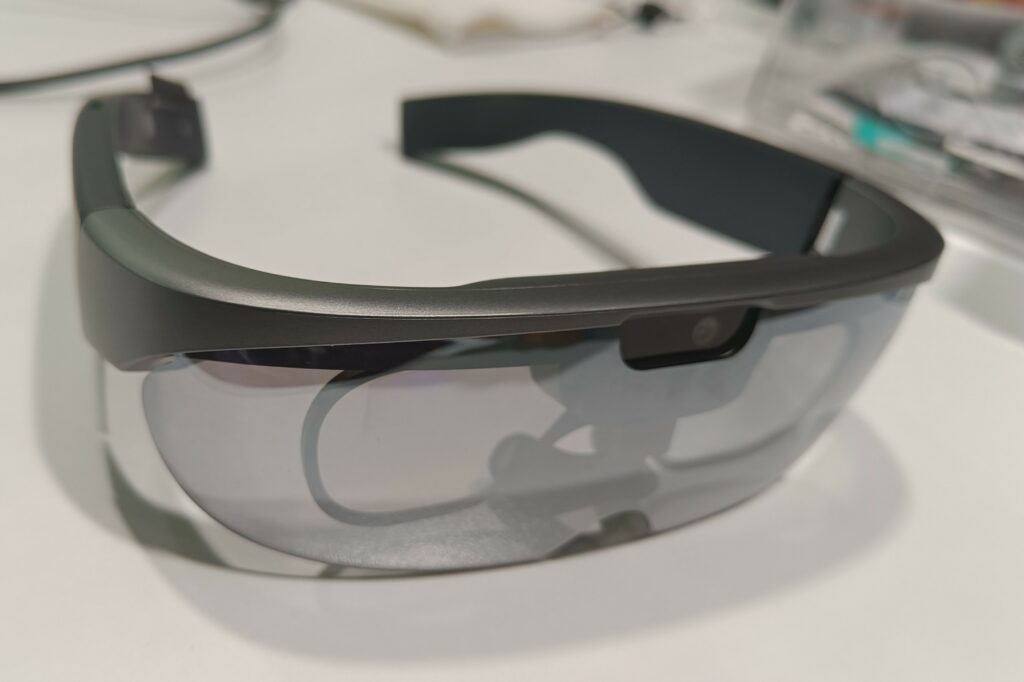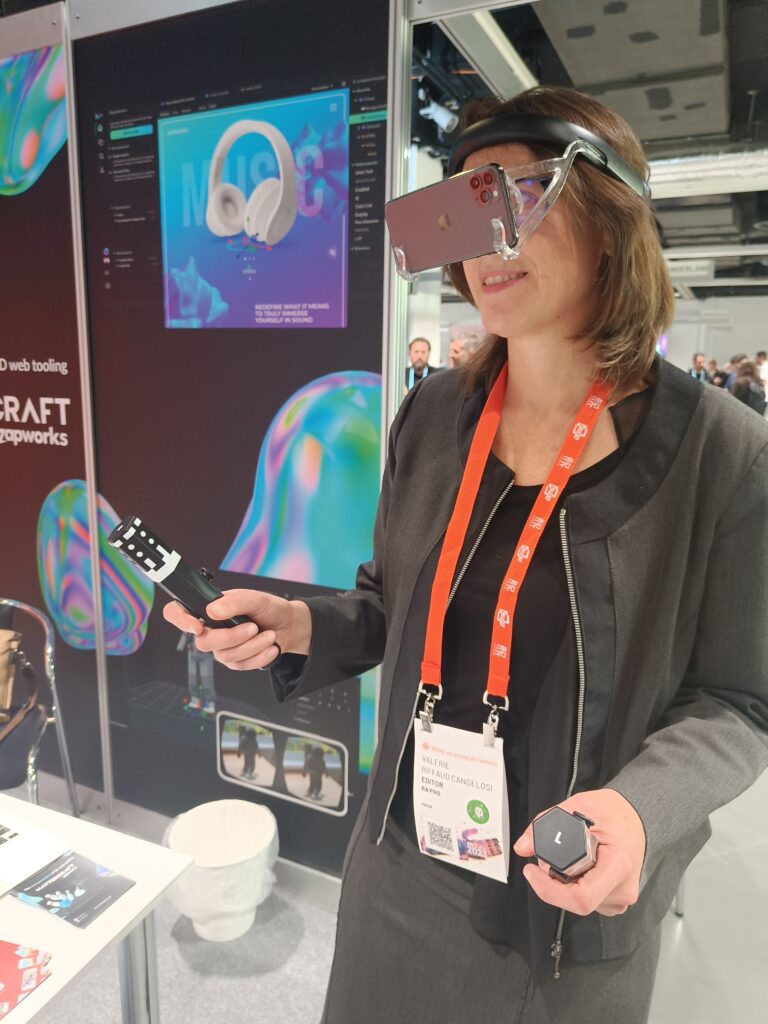AWE EU 2023 has been a successful event according to Ori Inbar, AWE founder, with 1600 expected attendees, 200 speakers and 120+ exhibitors. And for its 7th European edition, it was taking place In Vienna, the birthplace of mobile AR, lovely city that could easily accommodate the crowd coming from all over the world.
Despite the worldwide political situation, people have made their way to Austria; curiously for AWE EU, Hong Kong, which seems to have serious ambitions to develop in Europe, was the Titanium sponsor, and presented not less than 15 XR companies, supported by HK representatives.
Europe is indeed attractive : out of the 38 billion USD expected in 2023 for XR, 30% would come from Europe (vs. 31% for North America) according to ARtillery Intelligence, and this gives a strong traction to European actors.
Technews and TechCrunch announced earlier this month that “2023 will be a pivotal year for AR & VR”; given there are only 2 months left, we assume they should be right. But through the various conferences and the exhibitors at AWE, we could see that the market is maturing and has reached an all-new level.
New business models & “in the shadows” companies’ appearance, proof of the XR market maturity
Many software companies exposed at AWE EU this year and from very various sectors as arts & culture (Arcade, Artivive, Imvizar), industry (Hololight, ViewAR), marketing (Mazing, Onirix), gaming (Ambia), education (Brainspark Games), healthcare (ARsoft)… pretty much all sectors were covered.
What was interesting though is that most of them were not brand new on the market; but they evolved towards SaaS models and started to get away from business models solely based on custom developments. And that is a quite valuable aspect of the maturation of the XR industry.
Other companies have picked some verticals as well to enhance their proposals in areas where the markets start to be a bit “crowded” (relatively!): for instance PI TECH, developing XR experiences, has created an original AR postcard scheme named Picard, or Zappar, acting in the AR since 2011, has released besides its platform to develop AR experiences, Zapvision for partially sighted people or even Zapbox, a kind of a well-designed version of the cardbox!
AR-T in the accessory sector, is bringing to the market a plug-in to attach to the headset and a pen; that bundle allows for example to make precise measurements. The product to be released aims at measuring body wounds, which seem to be a market where current technics could be easily replaced with this package.
What was also quite interesting, is the appearance of specialised companies whose activities are “in the shadows”, proving that the market is getting mature : MDM specialised in XR products pool management such as ArborXR, automated control management of created 3D worlds with Gamedriver, or multi users facilitator engine from Photon, or even a “spatial AI assistant” developed by Phantom Technology and basically aiming at having a “visually educated” AI assistant through a pair of glasses (they featured a demonstrator based on the latest Digilens product). Trioptics on their side offer a full portfolio of testing scheme for optics, helping AR/VR headsets’ manufacturers to improve their go-to-market. All these looking very promising and reinforcing the XR solutions offering.
New smartglasses, new concepts and driven by usage
Of course, Meta was there, and got some success in demonstrating Meta Quest 3 with rather recreational applications; Vuzix and Lenovo as well, the latter having brought along some partners to demonstrate their solutions on its headset VRX (Sphere, Engage, Uptale, Hevolus). Even Magic Leap people were around the alleys demonstrating ML2.
In parallel, we could witness a few interesting devices focusing on very vertical market segments:
- VRgineers featuring very high-end professional pilot training VR (and soon MR) that won the AWE EU 2023 “best in show” award
- Viewpointsystem that opted to develop headset without lenses, but including camera and eye tracking for industrial training and remote support
- Oostlong, already seen at CES, the Swiss company offering two models for specific markets: the ski goggles Sirius, and Lyra, everyday glasses with live translation and navigation system.
- Almer, a quite simple monocular headset with camera, 43gr, and only sold bundled with selected third-party software as a service; it targets remote assistance and training use cases.
Even a few providers showed off their latest technologies as Optiark, selling waveguides & light engine, and promoting the launch of glasses based on their technology via Kickstarter; or Dispelix, not far from Vitrealab promoting the “brightest projector for AR” on their stand.
A fruitful base for headsets demonstrations or development, and it was quite encouraging looking at all these new upcoming products at AWE EU 2023.

So many conferences… but a vertical approach.
I only had the chance to go to a few conferences, as I was eager to meet many exhibitors, and the show floor opened at 11am on day 1 and closed at 3pm on day 2 (which was overall a bit short to cover them all).
I had to be very selective, but the few I have attended were interesting, mainly because they were “vertical” as the conference zone was split into different topic areas, as “industry” or “investors” for example.
I had a special interest on smartglasses and components, as well as industry related conferences, and I could attend a couple of more transversal ones. I was for example pleased to see that there were now several VCs/investors specializing in XR, which will enable more companies to get access to fundings.
Fors VC, Startup Wise Guys and FOV ventures did a very interesting interactive Q&A session on the investment in XR companies that was really encouraging.
And following the startup competition initiated by AWE, eight innovative finalists made their presentations for the Pitch Competition. The winner of this year’s “Start-up to Watch” award was Brainspark Games.
A good initiative to bring to light start-ups for potential investors.
Conclusion
There were a high number of exhibitors and conferences at AWE EU 2023, and the event would have probably deserved more time (especially the expo for the brave ones who wanted to make the most of both). The panel of exhibitors provided a wide range of experiences as extreme as Exit Suit, an innovative, fun to watch new seat for XR experiences or even the vivid experience of War in VR reproducing in virtual reality the war in Ukraine and its effects on the population in a realistic way…
This was however an enlightening event regarding the positive trends and highlights from the European (and beyond) XR ecosystem; Specialised XR investors, a growing number of associations supporting the development of the industry (AIXR, XR Vienna, Women in Immersive Technology, Virtual Worlds Society, and Euromersive did a great job getting people together on the pre-event party), new products, and more thought-through software business models: all of this showing a maturity of the market far beyond what we have seen so far.
Maybe TechCrunch/Technews are right, 2023 is the pivotal year for XR and for many good reasons!

